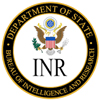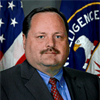Everyone likes to stay data is the new oil, but if the network isn’t finely tuned, if it can’t handle the ever-increasing amount of information; if it’s stuck using old technology, then that oil, if you will, will remain stuck in the ground.
Without a doubt, agencies who had modernized their networks fared better than those who did not over the last few months.
Agencies need to consider those lessons learned from the coronavirus pandemic and how to apply them over the next six months or next six years.
This means understanding how the as-a-service and hybrid cloud models works and can help ensure they are prepared for future surges and declines.
And then the modernized network also will play a key role in securing data and applications. That is another one of those benefits that can’t be overlooked or undervalued.
In 2019, the Federal CIO Council released a white paper about what the future of federal networks could look like.
The council said network modernization will be at the heart of the new digital economy and tomorrow’s government.
The papers highlights the need for networks to handle emerging technologies such as artificial intelligence (AI) and machine learning (ML), new industrial sensors and the proliferation of internet of things (IoT) devices and the rise of the mobile workforce.
And, of course, the expected implementation of 5G mobile networks, which will fundamentally change mobile and computing on the edge, and the increasing adoption of software defined wide area networking (SD-WAN), which will change how networks are managed and operated for IT enterprises.
All of these considerations are ways agencies can prepare their networks to thrive no matter the circumstance.
Colin Gosnell, the head of solution engineering at Comcast Government Services, said federal customers are looking to simplify their operational structures and therefore asking carriers to take on more responsibilities of the network.
He’s said the total demand from agency customers across Comcast Government Services’ network is a good reminder for why infrastructures need to be agile, flexible and scalable.
“Some of the elements we see in the traffic, a 285% increase in voice over IP and video calls. That is a large demand on a network in a service that requires some high service level agreements and high performance to meet the expectations of the end customer. We’ve also seen 40% increase in the use of virtual private networks,” he said.
Bandwidth cannot be an issue. It’s too inexpensive now. We have to be able to get all the bandwidth you want whenever you need it. You can’t afford to be slow. You can’t afford to latent. Diversity is very important, but so is bandwidth. I don’t want the mission to fail because I didn’t give the Air Force or the Marines or the Army enough bandwidth to do their job.
Andy Gomer
Highly Qualified Expert on DoD Transport, Defense Information Systems Agency
The Pandemic Effects on the Network
There’s a lot to be said for having a network that is able to adjust—we call it an adaptive network—it’s really building in the controls that when there is a substantial change in your network whether it’s a failure or geopolitical event that causes the network to go down as opposed to the virus, you really need to have the adaptability and capacity built into the network so when something unexpected happens, you can adjust and adapt to it.
Jim Westdorp
Chief Technologist, Ciena Government Solutions
The Future of the Network
We can’t any longer afford to do our business in centralized locations. Those locations can be denied to us—COVID-19 is doing that right now. We need to be able to do our work, conduct the business of classified intelligence analysis and do it in a distributed fashion.
Geoff Fowler
Chief Information Officer at the Bureau of Intelligence and Research, Department of State
Listen to the full show:
Copyright
© 2024 Federal News Network. All rights reserved. This website is not intended for users located within the European Economic Area.












